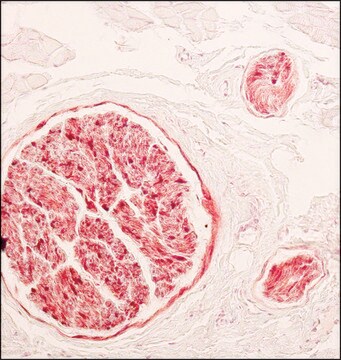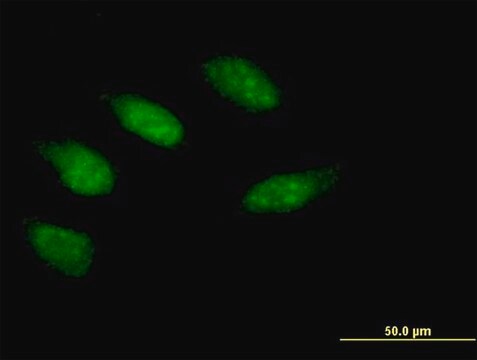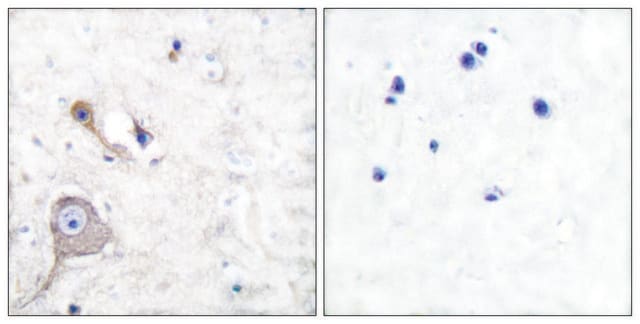S2532
Monoclonal Anti-S-100 (β-Subunit) antibody produced in mouse
clone SH-B1, ascites fluid
Sinonimo/i:
Anti-NEF, Anti-S100, Anti-S100-B, Anti-S100beta
About This Item
Prodotti consigliati
Origine biologica
mouse
Livello qualitativo
Coniugato
unconjugated
Forma dell’anticorpo
ascites fluid
Tipo di anticorpo
primary antibodies
Clone
SH-B1, monoclonal
contiene
15 mM sodium azide
Reattività contro le specie
feline, pig, bovine, sheep, goat, rabbit, canine, human, rat
tecniche
dot blot: suitable using denatured-reduced preparations
immunohistochemistry (formalin-fixed, paraffin-embedded sections): 1:1000 using protease-digested sections of human tongue
indirect ELISA: suitable
microarray: suitable
radioimmunoassay: suitable
Isotipo
IgG1
N° accesso UniProt
Condizioni di spedizione
dry ice
Temperatura di conservazione
−20°C
modifica post-traduzionali bersaglio
unmodified
Informazioni sul gene
human ... S100B(6285)
rat ... S100b(25742)
Descrizione generale
S-100 is a set of small, thermolabile, highly acidic dimer proteins of approximately 20kDa which are widely distributed in different tissues. Dimeric combinations of two chains, the α-chain (93 amino acids,10.4kDa) and the β-chain (91 amino acids, 10.5kDa), form the three known subtypes of S-100: S-100ao (αα), S-100a (αβ) and S-100b (ββ).
Monoclonal Anti-S-100 (β-subunit) (mouse IgG1 isotype) is derived from the SH-B1 hybridoma produced by the fusion of mouse myeloma cells and splenocytes from an immunized mouse.
Specificità
Immunogeno
Applicazioni
- ELISA
- Immunofluorescence
- Immunohistochemistry
- Western blotting
Azioni biochim/fisiol
Stato fisico
Stoccaggio e stabilità
Esclusione di responsabilità
Not finding the right product?
Try our Motore di ricerca dei prodotti.
Codice della classe di stoccaggio
10 - Combustible liquids
Classe di pericolosità dell'acqua (WGK)
WGK 3
Punto d’infiammabilità (°F)
Not applicable
Punto d’infiammabilità (°C)
Not applicable
Certificati d'analisi (COA)
Cerca il Certificati d'analisi (COA) digitando il numero di lotto/batch corrispondente. I numeri di lotto o di batch sono stampati sull'etichetta dei prodotti dopo la parola ‘Lotto’ o ‘Batch’.
Possiedi già questo prodotto?
I documenti relativi ai prodotti acquistati recentemente sono disponibili nell’Archivio dei documenti.
I clienti hanno visto anche
Il team dei nostri ricercatori vanta grande esperienza in tutte le aree della ricerca quali Life Science, scienza dei materiali, sintesi chimica, cromatografia, discipline analitiche, ecc..
Contatta l'Assistenza Tecnica.














